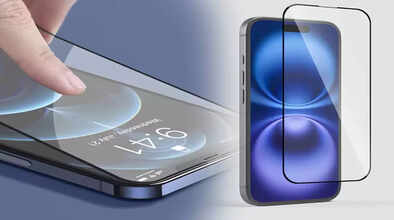Tempered Glass: What's the difference between 2D, 3D, and 11D tempered glass? Know the truth before you buy..

2D vs 3D vs 11D Tempered Glass: Tempered glass is essential for smartphone protection these days. However, there are many different types of tempered glass available on the market, such as 2D, 3D, 9H, and 11D, leaving users confused about which one is best. Each tempered glass has its own characteristics and strength.
2D Tempered Glass: Basic Protection
2D tempered glass is the most common and affordable. It covers only the flat surface of the screen, leaving the edges exposed. This is a good option if your phone has a flat display, but it's less effective for phones with curved screens because it wears off easily and doesn't provide edge protection.
3D Tempered Glass: Better for Curved Displays
3D tempered glass is better for curved displays because its edges are slightly curved. It covers the edges of the phone's screen, providing greater protection. It's specifically designed for smartphones with curved screens. Its fit is smooth, and it gives the phone a premium look.
11D Tempered Glass: Advanced Protection
11D tempered glass is considered more advanced than 2D or 3D. In reality, terms like 4D, 5D, 9D, or 11D are used solely to confuse customers and make them appear more premium. People began to believe that the "D" stands for hardness, and the higher the "D," the stronger the tempered glass. Taking advantage of this notion, companies created marketing gimmicks and began selling glass labels ranging from 4D, 5D, 9D, and even 11D.
The reality is that the dimensions are limited to only 3. Tempered glass sold as 11D is actually 2.5D glass. It's important to note that the true strength of tempered glass is measured with an "H," such as 9H hardness.
The "9H" hardness rating indicates a high degree of scratch and impact resistance. Scratches from everyday use, such as keys or coins, don't damage the screen.
Which tempered glass should you buy?
If you have a flat-screen phone, 2D or 9H tempered glass is sufficient. For curved displays, 3D or 11D are better options. Those seeking strength and longevity may prefer a slightly more expensive tempered glass, as it doesn't affect touch sensitivity and keeps the phone's heat under control.
Disclaimer: This content has been sourced and edited from TV9. While we have made modifications for clarity and presentation, the original content belongs to its respective authors and website. We do not claim ownership of the content.

